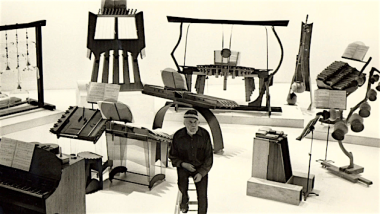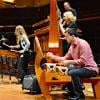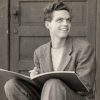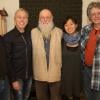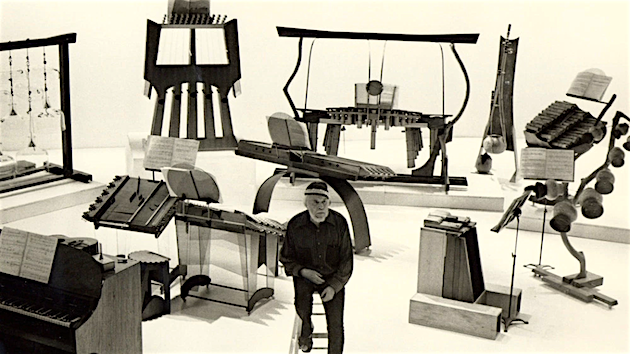
While the names of these musical instruments don’t exactly roll off the tongue — the chromelodeon (an adapted reed organ), the quadrangularis reversum (a marimba-esque instrument built from eucalyptus and redwood) and the zymo-xyl (an oak-block xylophone augmented with tuned liquor and wine bottles, Ford hubcaps, and an aluminum ketchup bottle) — they were part of a revolution in music that was sparked by the iconoclastic composer, music theorist, and performer, Harry Partch, who, in fact, had actually built them. Indeed, when Partch rebelled against what he called “the tyranny of the piano scale” — rejecting traditional Western scales and their instrumental counterparts — he became a pioneer in microtonal music.
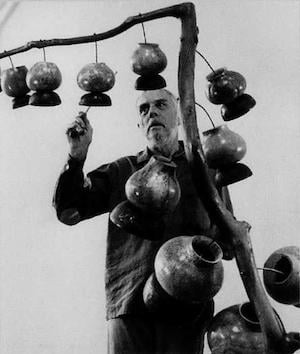
Instead of making use of the 12-note chromatic scale, Partch, who was born in Oakland, California, in 1901 and died in 1974, based his compositions on an octave divided into 43 intervals that were derived from overtones. Others, including Charles Ives and Aloys Hába, had explored similar microtonal scales, but it was Parch who went on to construct a mind-boggling array of instruments such as a 72-string kithara, reeds that he called boos, glass bells known as cloud-chamber bowls, and the bloboy, which was made of bellows, three organ pipes, and — yes — a 1912 auto-exhaust horn.
Familiar with elements of the road — hence an auto exhaust integral to one aspect of his music-making — Partch was eccentric in every sense of the word: At age 14 he began writing music and two years later he played piano in silent movie theaters, going on to support himself by proofreading and fruit-picking, after which he rode the rails for about eight years during the Depression. It was not for nothing that the late critic Martin Bernheimer referred to Partch as “a latter-day Don Quixote ... that kind of composer, that kind of man.”
Among the works he wrote during those travels was The Wayward, a five-part opus that chronicles transient life from 1935–1941, one that the esteemed L.A.-based Partch ensemble performed this past Saturday, Nov. 9. The group now plays 14 custom instruments reproduced from Partch’s originals and is adding more. Like most Partch fans, and certainly performers, the members of the Grammy-award winning ensemble are mild obsessives, not just about the music but about what it represents theoretically and in a larger, worldview kind of way.
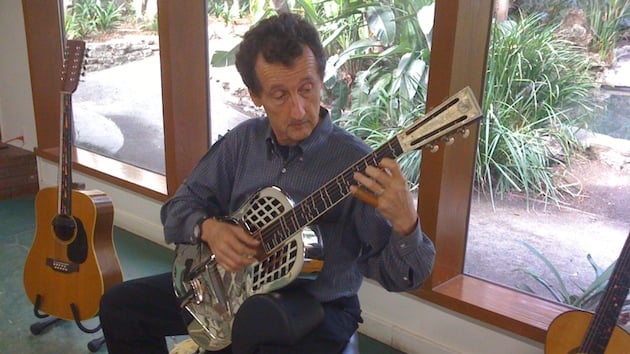
John Schneider is the founder and director of the ensemble, which began as Just Strings in 1991 and changed its name to Partch in 2005. He is also a guitarist, composer, author, and broadcaster who was once dubbed a “microtonalist maven,” by the Wall Street Journal. Schneider, obsessed by the notion of microtonality, has said that, for him, “all roads lead to Partch.”
“I started to play Lou Harrison’s music in pure tunings,” Schneider recalled, “and had only one instrument at the time, so I had to build one — an adapted guitar. That’s what Partch called most of his instruments, beginning with the adapted viola. I heard Harry’s music and it grabbed me by the ears and said, ‘Listen to me.’ The first piece I fell in love with was “Barstow.”
“It’s funny and it’s human. That turned a case of love into a case of lust. I had to play it and build the instruments myself. If you fall in love with Harry Partch, you can’t play it on instruments except the created ones.”
Written in 1941, “Barstow” set to music the graffiti of hitchhikers on a California highway and is the first section of The Wayward. Schneider explained that Partch used conversations among hoboes on a cross-country freight train, and “reorchestrated the piece quite a few times,” adding “we’re playing the latest version.”
The other sections of Wayward are “San Francisco,” “The Letter,” “U.S. Highball,” and “Ulysses at the Edge of the World.” Added Schneider: “We’re the only people that play it on the planet, and the premiere [put] all five parts together for the first time.”
Alison Bjorkedal joined Partch in 2011. A classically trained harpist who teaches at CalArts and Pasadena City College, she is an avid fan of new music who has performed world premieres by William Kraft, Anne LeBaron, and others, as well as appearing with the avant-garde group wild Up. She admits, however, that she didn’t know much about Partch before she was asked to join the group.
“He was two lines in my undergraduate music history book,” Bjorkedal, 38, said with a laugh. “I was recommended to John by Southwest Chamber Music to play the kithara, and that made me do research, listen, and get to know the music.”
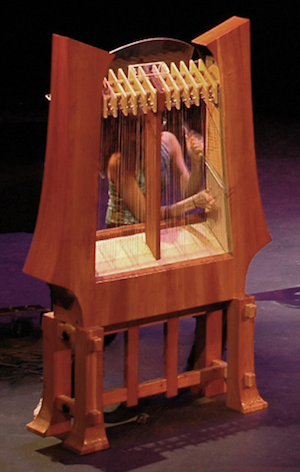
Partch’s reinterpretation of the ancient kithara is a towering instrument that requires the performer to stand on a riser in order to play it, was originally built in 1954 and has twelve sets of strings that correspond to Partch’s primary tonalities, with four of these sets employing Pyrex rods as movable bridges, or sliders. For the Jacaranda concert, the Partch ensemble had the kithara II built specifically for them (the ensemble plans to add one new instrument per year).
Standing 7 feet, 6 inches, the instrument is considerably taller than Bjorkedal, who, at 5 feet, 11 inches, is not exactly short. “Luckily,” she adds, “I have really long arms so I can get from one place to another easier,” noting that the instrument is actually a bass kithara and was the second one that Partch built.
“Learning to play an entirely new instrument,” recalled Bjorkedal, “was a challenge at first, because as professional musicians, we get so used to our instruments. We spend years with them locked in a practice room, and suddenly, in my 30s, I’m pushed into something entirely new. It was very humbling to start from scratch on a new instrument and the first show was a struggle to get ready for, but there’s nothing so unique as Harry’s music.
Bjorkedal said she finds a certain irreverence to what Partch was doing. “It was something that stuck out to me from the beginning, and I find it fun to explore that, because a lot of the music has this really dry sense of humor that is so refreshing.
“The interesting thing about Partch’s music that makes it so fascinating,” she added, “[is that] although it goes so far outside of our classical scale, it is easily accessible. I don’t know if it’s because Harry was trying to mimic human speech and there are a lot of conceptual things behind the music when you listen to it, but it’s just likeable at face value without knowing why he’s doing what he’s doing. It’s got a beat, it’s got a groove, and if there are words, they’re captivating. There’s a real sense of time and place and his is a uniquely American voice.”
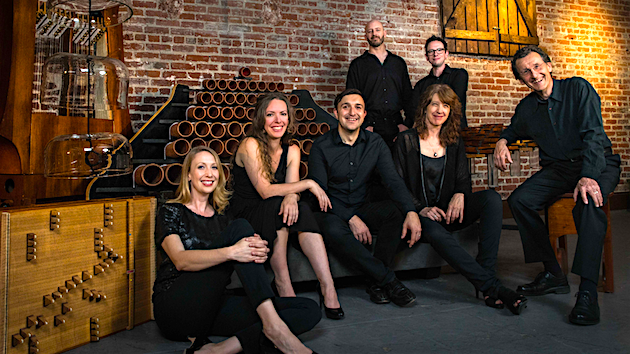
Schneider, who holds a Ph.D. in Physics and Music from University College Cardiff (U.K.), and is president emeritus of the Guitar Foundation of America, agrees. In the ensemble he performs on the bloboy, on the harmonic canons (44-stringed instruments with complex systems of movable bridges played with fingers, picks or unique mallets), and on cloud-chamber bowls made from large Pyrex vessels called carboys. In addition, he tackled the role of Mac, who rides the rails from San Francisco to Chicago in “Highball” and intones fragments of conversations that include advice on “how to avoid the town where the railroad dicks have their training school.”
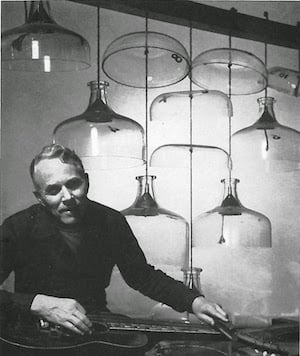
According to Schneider, Mac doesn’t require singing, but pointed out that “it’s intoning. Harry wrote it down in pitches, but it’s not meant to be sung. It’s more like “sprechstimme” [a cross between speaking and singing] which is the difference between articulation and enunciation. You can say a sentence 3,000 different ways and Harry was aware of that. It’s one of the reasons he thought of microtonality, because he wanted to be able to control intonation.”
T.J. Troy, a Grammy Award-winning percussionist who joined Partch in 2003 and is now also its executive director, did undergraduate work at the University of Michigan, where he first learned of the maverick composer. Troy performs on the bass marimba. Featuring 11 bars made of Sitka spruce and situated over organ pipes that serve as resonators, the keys are so high that Troy, a mighty 6 feet, 5 inches himself, must stand on a riser six-feet wide and more than two-feet tall, with nimble footwork as important as deft hands.
Troy likens the Partch learning curve to mastering that of any musical language. “Imagine for just a moment Harry Partch in his compositional practice. He’s invented these instruments that [feature] the 43-tone scale and that’s very cerebral. Like any musician, he would sit down and improvise; he would play the music that poured out from his hand and transcribe it. You improvise a bit, then go back to your desk.
“You play and keep the ideas that work,” continued Troy, “and that process continues over and over and everything on the instruments that he wrote is very kinesthetic, very idiomatic for the natural way it lays on the instrument. Once you get inside the notation and the idiosyncrasies, it starts to become a natural flow, through the printed page, through your hand, and I would call that a player’s music.”
Troy added that he looks for those moments when “a combination of the feelings, the experience, and the intellectual satisfaction coalesce to become an artistic aesthetic. I search for those opportunities as a player. I seek them out.”
Troy agrees with Schneider that Partch’s vocal aesthetic is drawn from the spoken word. “Which is why he wanted 43 tones. Harry did not stumble on this accidentally, but it was through a deep understanding of the similarities between different genres and styles of music and different cultures.
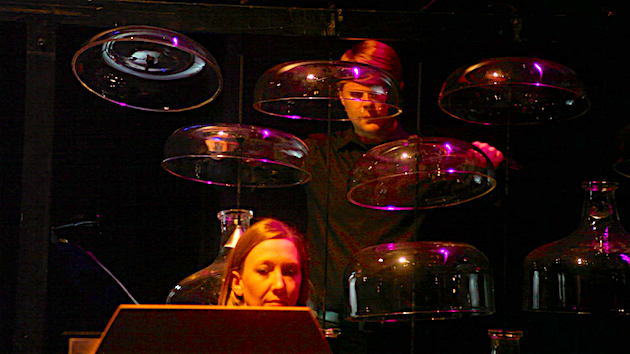
“A lot of times we want to focus on the differences — that’s what makes us special,” Troy noted, “but what Harry really championed on a deep level, he began to see similarities between ancient Greek, Roman, and Chinese music — first on a technical level and then with microtonal music. I think he saw that, he understood it and how we can start to create through this microtonal tuning system as our foundational element and then build upon it.”
Troy acknowledged that the intellectual torch was passed to Partch, “by whom, I don’t know, but he ran with it. And what our group decided to do — we see that same torch, that concept and that aesthetic — and are taking it in our own way. It’s true to us and true to members in our own group to honor Harry with what he gave to us.”
Schneider continued that thought: “Basically,” he explained, “Harry was very interested in drama, emotions, and getting feelings across, and that’s what good articulation and acting was all about. He was trying to compose that aspect of musical ideas, words, and melodies. W.B. Yeats had much the same idea and Partch’s first big piece was Yeats’s translation of King Oedipus, by Sophocles. Partch went to Dublin to talk to Yeats about it, and he had Yeats read for him while he took dictation to get the exact pitch inflections of his reading.”
If this sounds esoteric or arcane, it may be, but the music of the boundary-busting visionary who carefully crafted Rube Goldberg-looking instruments in order to duplicate the sounds he envisioned in his head — wondrous, bouncy rhythms that swim in a sonic universe bursting with celestially shifting moods — seems to touch people who hear it — and certainly affects those who perform it, while musical descendants of Partch might also include the Bay Area’s Paul Dresher, who has invented a variety of instruments such as the quadrachord and the hurdy grande.
But for Schneider, being able to recreate the wishes of a composer has proven nothing less than incredible. “Because I’ve never actually been able to hear what he’s imagined, because no one’s really done it before us, in my opinion — and sometimes even Harry had to train musicians every time he moved, and he was complaining that people never got it right — for me, I love to bathe in the music.
“People don’t really know about this stuff and Harry’s probably the best kept secret in American music. Nobody talks about him, and so few people have the thrill of hearing the music live that the thrill of being able to play his music is wonderful, because it’s so rare.”
Added Troy, who is on faculty at the Pasadena Conservatory of Music and also teaches at Colburn School:
You have to work hard to get people to come out, but I really think there’s nothing like seeing this music live to bust open your head. It’s a paradigm shift, and we have a deep impact on people when they come in, especially with younger students.
The instruments are a spectacle — they’re gigantic, misshapen, strange, exotic — and to hear their interesting tones put next to each other, audiences are transfixed with the emotion of the music. The person you were before hearing Harry Partch and the person you are after, for some that can have a huge impact that results in a flexibility of your temperament. You become less rigid, and everywhere around the world and all through mankind, we can have relatability. Your own concepts of what music is and is not becomes more flexible, and I’m glad to play a part in that."

